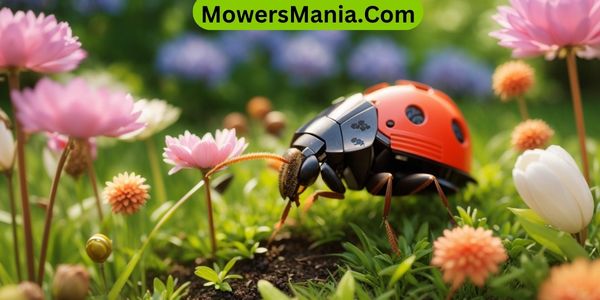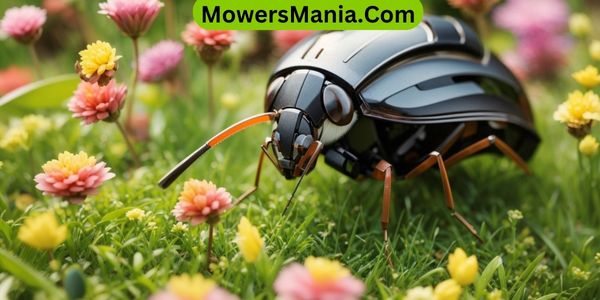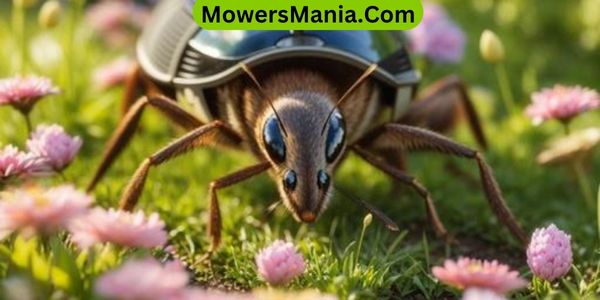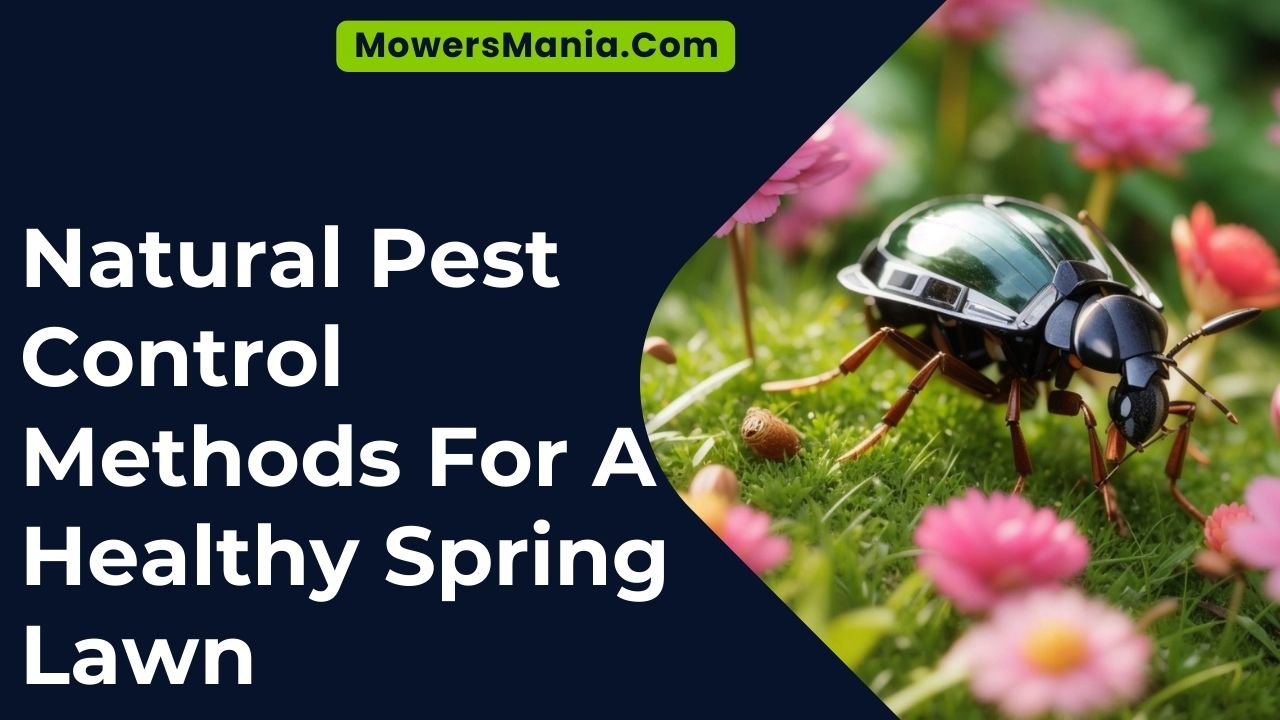Want a healthy spring lawn without using harsh chemicals? Discover natural pest control methods that are safe for you, your family, and the environment.
In this article, we’ll show you how to understand common lawn pests, attract beneficial insects, and use DIY remedies to keep your lawn pest-free.

Learn how to maintain a healthy lawn through proper maintenance and create a pest-resistant landscape design.
Say goodbye to pests and hello to a vibrant, pest-free lawn this spring.
Understanding Common Lawn Pests
To effectively control pests in your spring lawn, it’s important to understand the most common types of pests that can damage your grass. By being aware of these pests, you can take proactive measures to prevent and manage infestations, ensuring a healthy and vibrant lawn all season long.
One of the most common pests that can wreak havoc on your lawn is the white grub. These larvae of beetles, such as Japanese beetles and June bugs, feed on the root system of your grass, causing it to wilt and die.
Another common offender is the armyworm, a caterpillar that munches on grass blades, leaving behind brown patches in its wake.
Chinch bugs are tiny insects that thrive in hot and dry conditions. They suck the sap from grass blades, causing them to turn yellow and eventually die. If you notice small, yellowish patches in your lawn, chinch bugs may be the culprits.
Lastly, we’ve the mole cricket, an underground pest known for tunneling through lawns. These pests not only disrupt the root system but also create unsightly mounds of soil on the surface.
By familiarizing yourself with these common pests, you can implement targeted pest control strategies and minimize the damage they cause.
Stay tuned for the next section, where we’ll discuss natural pest control methods to keep your lawn pest-free and flourishing.
Attracting Beneficial Insects to Your Yard
To attract beneficial insects to your yard, create a welcoming environment by implementing specific gardening practices.
Creating a habitat that attracts beneficial insects is essential for natural pest control in your yard. By incorporating the following practices, you can encourage these helpful insects to make your yard their home:
- Plant diverse flowers: Cultivate a variety of flowering plants to provide nectar and pollen sources for beneficial insects. Choose plants like marigolds, daisies, and sunflowers that attract bees, butterflies, and other pollinators.
- Avoid pesticide use: Beneficial insects are sensitive to pesticides. Minimize or eliminate the use of chemical pesticides to ensure their survival. Opt for organic and natural pest control methods instead.
- Provide water sources: Set up shallow dishes or birdbaths with water in your yard. This will help attract beneficial insects that require water for survival and reproduction.
- Build insect shelters: Construct small shelters, such as bee houses or brush piles, to provide nesting sites for beneficial insects. These structures offer protection from extreme weather conditions and predators.
Natural DIY Pest Control Remedies

Now let’s explore how you can effectively control pests in your yard using natural DIY remedies.
When it comes to pest control, there are several simple and eco-friendly solutions that you can make at home.
One effective method is to create a homemade insect spray using ingredients you may already have in your kitchen.
Mixing water, dish soap, and a few drops of essential oils like peppermint or lavender can create a powerful solution that repels pests such as ants, aphids, and spiders.
Another natural DIY remedy is using diatomaceous earth. This powdery substance, made from the fossilized remains of tiny marine organisms, can be sprinkled around your yard to control a variety of pests.
Diatomaceous earth works by dehydrating insects, causing them to die. Additionally, it’s safe for humans and pets, making it a great alternative to chemical pesticides.
To deter slugs and snails, try placing copper tape around your plants. These slimy pests dislike the electric charge that copper gives off when it comes into contact with their mucus, so they’ll avoid crossing the tape.
Lastly, consider introducing beneficial nematodes to your lawn. These microscopic worms prey on pests like grubs, fleas, and cutworms, helping to control their population naturally.
Maintaining a Healthy Lawn Through Proper Maintenance
To maintain a healthy lawn through proper maintenance, you should regularly mow, water, and fertilize your yard. These simple tasks play a crucial role in keeping your lawn looking vibrant and lush.
Here are some key points to keep in mind:
- Regular Mowing: Set your lawnmower at the appropriate height for your grass type and make sure to mow it regularly. This will help promote healthy growth and prevent weeds from taking over.
- Proper Watering: Water your lawn deeply and infrequently to encourage deep root growth. Avoid overwatering, as it can lead to shallow root systems and increased susceptibility to disease.
- Effective Fertilizing: Apply a balanced fertilizer to your lawn at the recommended times and rates. This will provide the necessary nutrients for your grass to thrive and stay green.
- Weed Control: Keep an eye out for weeds and remove them promptly to prevent them from spreading. Consider using natural weed control methods, such as hand-pulling or spot treatment with vinegar or boiling water.
Creating a Pest-Resistant Landscape Design

Are you wondering how you can create a pest-resistant landscape design to protect your healthy spring lawn? Well, look no further!
By implementing a few simple strategies, you can create a landscape that naturally repels pests and reduces the need for harmful chemical pesticides.
One effective way to create a pest-resistant landscape design is by incorporating a variety of plants. Pests are less likely to thrive in a diverse environment, so consider planting a mix of flowers, shrubs, and trees.
Choose native plants that are well-adapted to your region, as they’re often more resistant to local pests.
Another key element of a pest-resistant landscape design is proper spacing. When plants are too close together, they can create a humid environment that encourages pest infestations. Be sure to provide adequate spacing between plants to promote air circulation and discourage pests.
Additionally, incorporating natural pest control methods can greatly reduce the need for chemical interventions. For example, you can attract beneficial insects like ladybugs and lacewings, which feed on garden pests, by planting flowers such as daisies and marigolds.
You can also use organic mulch to suppress weed growth, which can attract pests, and create physical barriers like fences or netting to keep pests out of specific areas.
Frequently Asked Questions [FAQs]
Can I Use Chemical Pesticides in Combination With Natural Pest Control Methods?
You can use chemical pesticides in combination with natural pest control methods, but it’s important to be cautious. Make sure to follow the instructions carefully and consider using safer alternatives whenever possible.
Are There Any Specific Plants or Flowers That Can Attract Beneficial Insects to My Yard?
To attract beneficial insects to your yard, consider planting flowers like marigolds, lavender, and yarrow. These plants can provide nectar and pollen that attract pollinators and predator insects, offering natural pest control for your spring lawn.
How Often Should I Apply Natural DIY Pest Control Remedies to My Lawn?
You should apply natural DIY pest control remedies to your lawn as needed. Monitor for pests and treat when necessary to maintain a healthy spring lawn.
Can Proper Lawn Maintenance Alone Prevent Pests From Infesting My Yard?
Proper lawn maintenance alone cannot prevent pests from infesting your yard completely. However, it can significantly reduce the risk by creating unfavorable conditions for pests and promoting a healthy lawn.
What Are Some Examples of Pest-Resistant Plants That I Can Include in My Landscape Design?
Some examples of pest-resistant plants that you can include in your landscape design are marigolds, lavender, and rosemary. These plants naturally repel pests and can help keep your yard healthy and pest-free.
Conclusion
So, by understanding common lawn pests and implementing natural pest control methods, you can have a healthy and thriving spring lawn.
Attracting beneficial insects, using DIY pest control remedies, and maintaining your lawn properly are all effective ways to keep pests at bay.
Additionally, creating a pest-resistant landscape design can further protect your lawn.
With these natural methods, you can enjoy a beautiful and pest-free outdoor space all season long.



